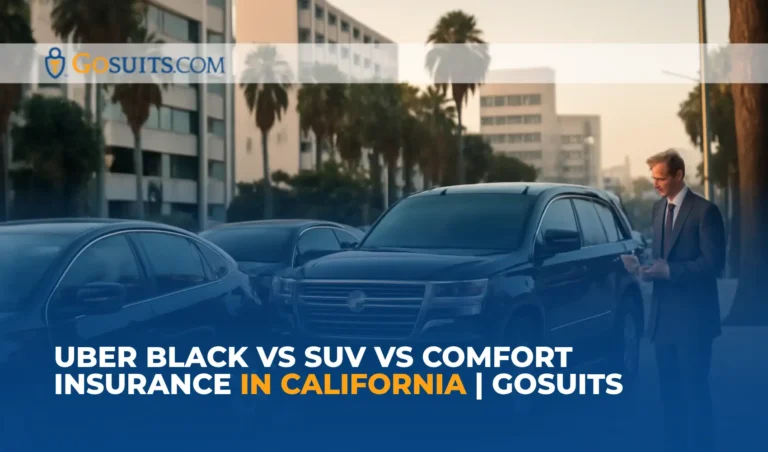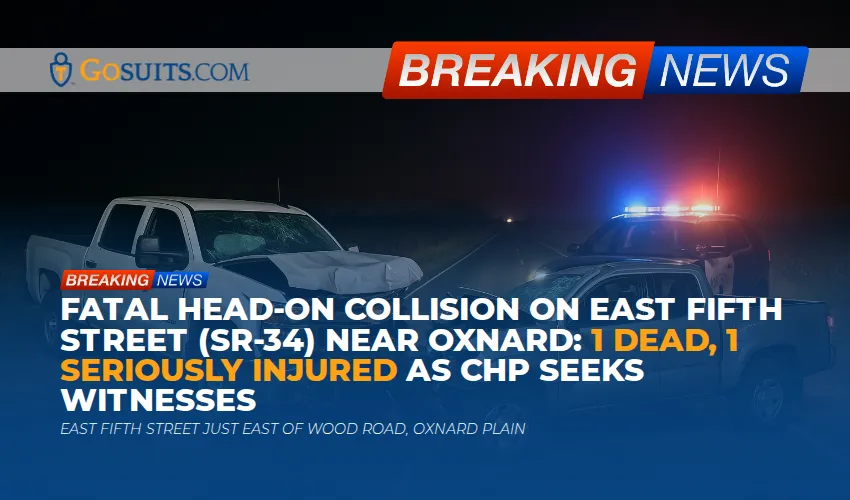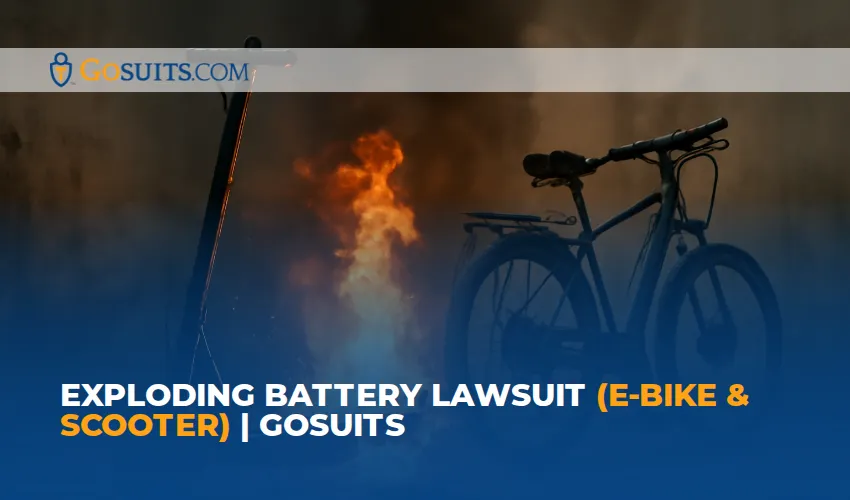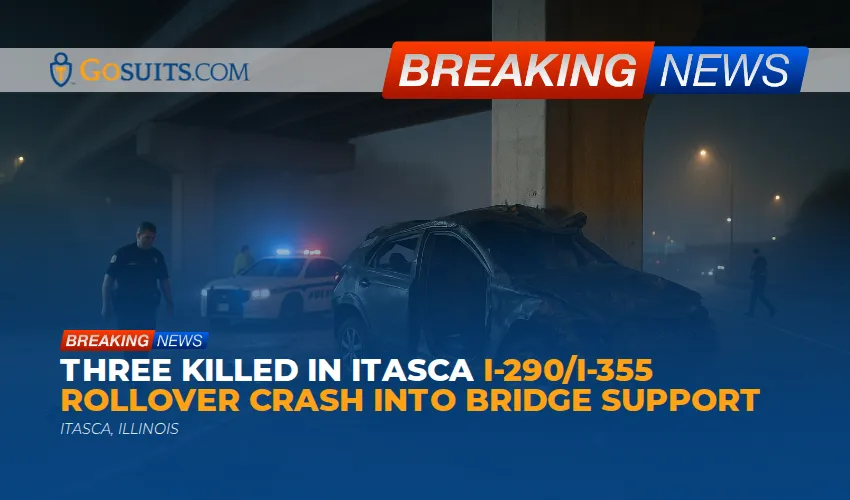- What do Uber Black, Uber SUV, and Uber Comfort mean for insurance in California?
- How do California TNC insurance periods 1, 2, and 3 work for these Uber services?
- What liability and UM or UIM limits do California laws require for rideshare trips?
- Does Uber Black or Uber SUV carry different commercial insurance than Uber Comfort?
- How does Proposition 22 affect driver insurance and benefits in California?
- What coverage applies if you are a passenger injured in an Uber in Los Angeles or San Francisco?
- What if you are a rideshare driver hit by another motorist in San Diego or the Bay Area?
- How do claims work for pedestrians, cyclists, or other drivers after an Uber crash in California?
- What time limits and notice rules apply to rideshare injury claims in California?
- How do comparative fault and key evidence shape Uber accident cases in California?
- What steps should you take after a rideshare crash in California?
- How do Uber Black vs SUV vs Comfort compare by period and scenario in California?
- How do California rideshare insurance rules compare to Texas and Illinois?
- What kinds of damages are available in civil rideshare cases in California?
- How do insurers and defendants typically defend rideshare claims?
- Who is GoSuits and how do we support clients with technology forward advocacy?
- How does GoSuits help with personal injury matters involving rideshares and serious crashes?
- What sources and laws are cited here?
What do Uber Black, Uber SUV, and Uber Comfort mean for insurance in California?
In California, insurance for Uber trips is largely defined by state law for transportation network companies, called TNCs. Uber Comfort is a TNC trip using a standard rideshare vehicle that meets Comfort requirements. Uber Black and Uber SUV are premium options that often operate as charter-party carriers with a CPUC TCP permit, similar to traditional livery or limousine services. That difference matters because California imposes specific insurance rules on both TNCs and charter-party carriers.
For TNC trips, California Insurance Code sections 5430 to 5445 set minimum coverages during three trip periods: when the app is on and waiting for a ride request, after a ride is accepted, and while a passenger is in the vehicle. These rules apply throughout California, including Los Angeles, San Francisco, San Diego, Sacramento, San Jose, Fresno, Oakland, Orange County, Riverside, the Inland Empire, and the Bay Area. When a Black or SUV trip is performed under a charter-party permit, additional commercial insurance levels set by the California Public Utilities Commission may also apply depending on seating capacity.
How do California TNC insurance periods 1, 2, and 3 work for these Uber services?
California defines three timeframes that control which insurance applies and in what amounts:
- Period 1: App on and driver available for a ride, but no trip accepted yet.
- Period 2: Ride accepted and driver en route to pick up the passenger.
- Period 3: Passenger in the vehicle until drop-off.
State law sets minimum liability limits for each period. During Periods 2 and 3, the required coverage increases substantially compared to Period 1. These rules are codified in the California Insurance Code provisions governing TNCs, which apply to rideshare platforms statewide.
What liability and UM or UIM limits do California laws require for rideshare trips?
California Insurance Code section 5433 requires the following minimum liability coverage for TNC activity:
- Period 1 minimums while the app is on and the driver is waiting:
- At least 50,000 dollars for death and bodily injury per person
- At least 100,000 dollars for death and bodily injury per incident
- At least 30,000 dollars for property damage per incident
- Plus at least 200,000 dollars in additional excess liability coverage
(California Insurance Code section 5433)
- Periods 2 and 3 after a ride is accepted and while a passenger is in the vehicle:
- At least 1,000,000 dollars in primary commercial liability coverage
(California Insurance Code section 5433)
California Insurance Code section 5434 addresses uninsured motorist and underinsured motorist coverage. For Periods 2 and 3, TNCs must provide UM or UIM coverage of at least 1,000,000 dollars. For Period 1, the statute permits lower amounts, but UM and UIM must be provided as required by state law for that period. These protections matter for passengers injured by hit-and-run drivers or motorists who lack enough insurance.
Remember that California’s basic financial responsibility law for personal autos is much lower, at 15,000 or 30,000 or 5,000 dollars depending on the category, but TNC requirements are higher to reflect commercial risk. (California Vehicle Code section 16056; California Insurance Code sections 5433 to 5434)
Does Uber Black or Uber SUV carry different commercial insurance than Uber Comfort?
Often, yes. Many Uber Black and Uber SUV trips are provided by charter-party carriers with CPUC permits, which are subject to separate commercial insurance requirements based on vehicle seating capacity. The CPUC’s Charter-Party Carrier rules require minimum liability insurance ranging from 750,000 dollars to 5,000,000 dollars depending on the number of passengers the vehicle is designed to carry. These are set under CPUC General Order 115-F and related rules. (California Public Utilities Commission, Charter-Party Carrier Insurance Requirements)
What that means in practice:
- Uber Comfort is generally a TNC trip covered under California Insurance Code sections 5433 to 5434. The TNC policy applies by period.
- Uber Black and Uber SUV may operate as charter-party carriers with their own commercial livery insurance that meets or exceeds CPUC minimums. The TNC periods and minimums still frame responsibility for app-based activity, but the livery policy can be primary depending on how the trip is arranged and the permits involved. Passengers typically benefit from higher commercial limits in these premium categories.
Because fleet and permit structures vary across Los Angeles, San Francisco, San Diego, San Jose, Oakland, and other California cities, the precise policy that responds can differ. The core takeaway is that premium livery options usually sit on top of or alongside California’s TNC framework and required limits. (California Public Utilities Code charter-party framework, CPUC transportation pages; California Insurance Code sections 5433 to 5434)
How does Proposition 22 affect driver insurance and benefits in California?
Proposition 22, passed by voters in 2020, classifies app-based rideshare drivers as independent contractors for certain purposes and requires transportation network companies to provide specified benefits and protections. For insurance, Business and Professions Code section 7453 requires app-based companies to provide occupational accident insurance to drivers for injuries arising out of work, with minimum medical and disability benefits and death benefits. It also outlines coverage when drivers are online with the app and when they are engaged in trips. (California Business and Professions Code section 7453)
Additional provisions include a health care stipend for qualifying drivers under section 7451. These Prop 22 benefits are distinct from liability insurance that protects the public and passengers. If you are a driver injured in a crash in the Inland Empire, Orange County, or the Bay Area, the occupational accident policy may help with treatment and lost income while the liability coverages address harm to others. (California Business and Professions Code sections 7451 and 7453)
What coverage applies if you are a passenger injured in an Uber in Los Angeles or San Francisco?
As a passenger, you are within Period 3. California law requires at least 1,000,000 dollars in primary liability coverage, plus at least 1,000,000 dollars in uninsured or underinsured motorist coverage for injury caused by a driver who lacks adequate insurance. (California Insurance Code sections 5433 to 5434)
How this typically works:
- If your Uber driver is at fault, the TNC or livery commercial policy generally pays for your injuries and losses up to policy limits.
- If another driver is at fault and has insufficient insurance, the TNC’s UM or UIM coverage can apply to your injuries, including in hit-and-run scenarios where legal requirements for UM claims are met.
- If multiple passengers are injured, several claims may draw on the same policy limits. Early documentation helps protect your claim.
Medical care and recovery come first. Claims can be complex when multiple insurers are involved. Coordinating liability coverage with UM or UIM often requires careful review of the Insurance Code and the facts of the crash.
What if you are a rideshare driver hit by another motorist in San Diego or the Bay Area?
Your coverage depends on the period and fault:
- Period 1: The TNC must provide 50,000 or 100,000 or 30,000 dollars plus 200,000 dollars additional liability coverage. If the other driver caused the crash, you can claim against their policy; if they are uninsured or underinsured, UM or UIM applicable to Period 1 may help. (California Insurance Code section 5433)
- Periods 2 and 3: If the other driver is at fault but carries low limits, TNC-provided UM or UIM at 1,000,000 dollars can apply to your injuries. You may also have access to occupational accident benefits under Proposition 22 for medical and disability support. (California Insurance Code section 5434; California Business and Professions Code section 7453)
Because drivers must also maintain their own personal auto insurance that meets state financial responsibility requirements, your personal policy may be implicated for certain losses outside the TNC periods. (California Vehicle Code section 16056)
How do claims work for pedestrians, cyclists, or other drivers after an Uber crash in California?
If you are a pedestrian, cyclist, or another motorist injured by a rideshare vehicle in California, the applicable insurance depends on the trip period and fault. For example:
- App on, waiting for a ride in Sacramento or Fresno: Minimum 50,000 or 100,000 or 30,000 dollars plus 200,000 dollars in additional liability coverage is available through the TNC framework if the rideshare driver is at fault. (California Insurance Code section 5433)
- En route to pick up in Oakland or San Jose: At least 1,000,000 dollars in primary commercial liability is available for at-fault harm. (California Insurance Code section 5433)
- Passenger on board in Los Angeles, Long Beach, or Santa Monica: At least 1,000,000 dollars in primary commercial liability coverage applies for at-fault harm. UM or UIM at 1,000,000 dollars also applies to passenger injuries caused by an uninsured third party. (California Insurance Code section 5434)
If the incident involves a premium livery trip like Uber Black or Uber SUV, the charter-party carrier’s commercial policy may be primary and may carry higher minimum limits. (CPUC Charter-Party Carrier Insurance Requirements)
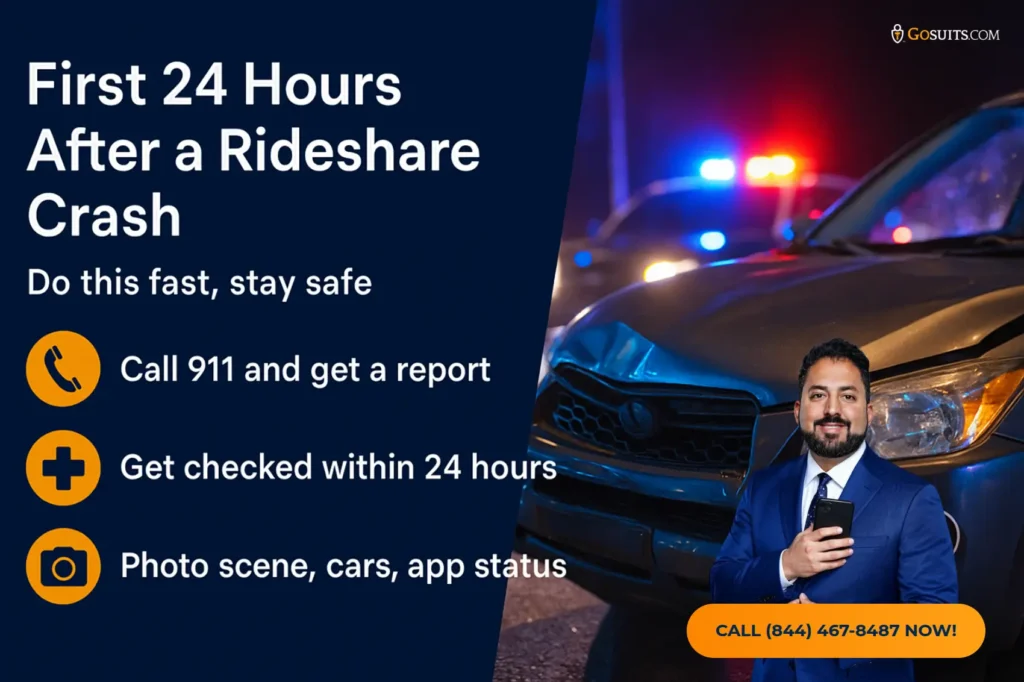
What time limits and notice rules apply to rideshare injury claims in California?
California sets strict timelines for civil injury claims:
- General personal injury statute of limitations: Two years from the date of injury. (California Code of Civil Procedure section 335.1)
- Claims involving a public entity such as a city bus or a government vehicle: A written claim must usually be presented within six months before filing a lawsuit. (California Government Code section 911.2)
These deadlines can be affected by the details of the crash, the age of the injured person, and whether a government agency is involved. Early action helps preserve evidence from vehicles, scene cameras in Los Angeles or San Francisco, and digital trip data.
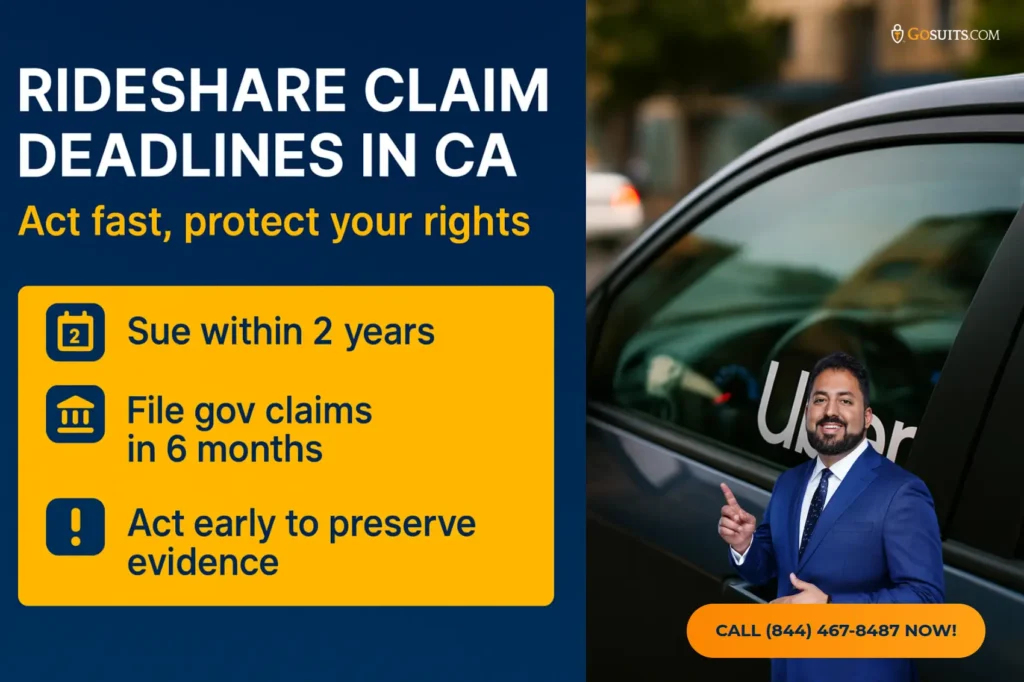
How do comparative fault and key evidence shape Uber accident cases in California?
California follows pure comparative negligence. Even if an injured person shares some fault, they can still recover damages reduced by their percentage of fault. The California Supreme Court adopted comparative negligence in Li v. Yellow Cab Co. (Li v. Yellow Cab Co., 13 Cal.3d 804, 1975)
Evidence that often matters in rideshare cases includes:
- Trip data: App timestamps, GPS, acceptance times, and drop-off details that show which period applied and how vehicles moved.
- Telematics: Speed, braking, and phone use data where available.
- Scene proof: Photos, videos, skid marks, and road hazards documented soon after the crash in San Diego, Riverside, or the Bay Area.
- Witness corroboration: Statements from passengers, drivers, and bystanders.
- Medical records: Prompt evaluation tying injuries to the collision.
California’s comparative fault standard means both sides pay close attention to these details in settlement discussions and in court.
What steps should you take after a rideshare crash in California?
Your health and safety come first, and you can help protect your claim by taking practical steps:
- Call 911 for injuries and request a police report when appropriate.
- Get medical care, even for symptoms that feel minor at first.
- Document vehicle damage, license plates, driver identity, trip status, and scene conditions in Los Angeles, San Jose, or anywhere in CA.
- Report the crash through the rideshare app and to your insurer, keeping copies of all confirmations.
- Avoid quick recorded statements without understanding how they might affect fault allocation.
- Seek skilled help so that liability coverage, UM or UIM, and Prop 22 benefits are evaluated correctly and on time.

How do Uber Black vs SUV vs Comfort compare by period and scenario in California?
Do all three options use the same California TNC insurance periods?
Yes. Whether you ride in Uber Comfort, Black, or SUV, the California Insurance Code defines the TNC periods and the minimum limits that apply while the app is on, after acceptance, and during the trip. (California Insurance Code sections 5433 to 5434)
Could Uber Black or SUV have higher commercial limits than Comfort during a trip?
Often yes. Many Uber Black or SUV vehicles are charter-party carriers permitted by the CPUC. Those carriers must maintain commercial coverage that can range up to several million dollars depending on seating capacity. That livery coverage can be primary for those trips. Comfort typically relies on the TNC-required limits. (CPUC Charter-Party Carrier Insurance Requirements; General Order 115-F)
How does uninsured or underinsured motorist protection compare across the three?
For TNC trips in Periods 2 and 3, state law requires UM or UIM of at least 1,000,000 dollars. Black and SUV trips that operate as livery may also have separate UM or UIM provisions under their commercial policies. Passengers and drivers often benefit from the strongest UM or UIM protections in Periods 2 and 3. (California Insurance Code section 5434)
What about when the driver is waiting for a ride in Los Angeles or Oakland?
During Period 1, California mandates at least 50,000 or 100,000 or 30,000 dollars plus 200,000 dollars excess liability. That applies whether the driver is in a Comfort, Black, or SUV vehicle. Black or SUV fleets may carry additional commercial coverage depending on permit status. (California Insurance Code section 5433)
How do plaintiff and defendant perspectives differ in these comparisons?
- Plaintiff focus: Identify the correct period, determine whether a livery policy is primary on Black or SUV, confirm UM or UIM triggers, and preserve trip and telematics data to support liability and damages.
- Defense focus: Contest period status, apportion fault under comparative negligence, evaluate whether a non-permitted vehicle was used, and assess whether damages link to the crash and not a preexisting condition.
How do California rideshare insurance rules compare to Texas and Illinois?
California, Texas, and Illinois all set specific TNC insurance minimums with similar period structures. The main differences are in required amounts and UM or UIM details:
- California: Period 1 requires 50,000 or 100,000 or 30,000 dollars plus 200,000 dollars additional liability. Periods 2 and 3 require at least 1,000,000 dollars primary liability and 1,000,000 dollars UM or UIM for injury. (California Insurance Code sections 5433 to 5434)
- Texas: The Texas Department of Insurance explains that when the app is on with no passenger, coverage must be at least 50,000 or 100,000 or 25,000 dollars. From acceptance to drop-off, at least 1,000,000 dollars in coverage for bodily injury and property damage is required. (Texas Department of Insurance)
- Illinois: The Transportation Network Providers Act requires at least 50,000 or 100,000 or 25,000 dollars when the app is on with no passenger and at least 1,000,000 dollars primary coverage from acceptance to drop-off, with UM or UIM of at least 1,000,000 dollars during the trip. (625 ILCS 57/20)
These comparisons matter for interstate travelers who might ride in Chicago, Dallas, Houston, or Austin, and then fly back to Los Angeles, San Francisco, or San Diego. Local statutes set the floor for coverage, and platform or fleet policies may go higher.
What kinds of damages are available in civil rideshare cases in California?
California civil cases can include several categories of compensable harm. Each case is fact specific, but commonly claimed categories include:
- Medical expenses: Past and future treatment related to collision injuries.
- Lost earnings and earning capacity: Income and opportunities affected by the crash.
- Pain, suffering, and loss of enjoyment: Non-economic harms recognized under California law.
- Property damage: Repair or replacement for vehicles and personal items.
- Wrongful death damages: In fatal cases brought by eligible survivors, within California’s statute of limitations. (California Code of Civil Procedure section 335.1)
The availability and measurement of damages will depend on proof of fault, medical documentation, and the insurance structure in place for the trip period and service level.
How do insurers and defendants typically defend rideshare claims?
Common defense themes include:
- Disputing fault: Arguing the other driver, a pedestrian, or a cyclist contributed to the crash, invoking California’s comparative negligence rule. (Li v. Yellow Cab Co.)
- Period disagreements: Contending the app status or acceptance time places the event in Period 1 rather than Period 2 or 3 to reduce available coverage.
- Causation challenges: Claiming medical issues predated the crash or were not caused by the incident.
- Policy priority: Debating whether a charter-party livery policy or TNC policy is primary on Uber Black or SUV.
- UM or UIM triggers: Arguing that evidence does not satisfy statutory requirements for hit-and-run or underinsured scenarios.
Plaintiffs respond by marshaling trip data, witnesses, scene evidence, medical records, and policy language to establish period status, fault, causation, and coverage triggers under California Insurance Code sections 5433 to 5434 and applicable CPUC rules.

Who is GoSuits and how do we support clients with technology forward advocacy?
GoSuits serves clients in California and leverages technology to move cases faster and with greater clarity. Our proprietary case software, built in-house and not available to other firms, helps organize evidence, sync timelines with trip data, and streamline communications so clients get timely updates and outcomes driven by solid documentation. With 30 years of combined experience across trials and settlements, our team has secured meaningful results in motor vehicle and rideshare cases. We prepare for court from day one, and that trial readiness has benefited many clients. You can review representative past cases here: https://gosuits.com/prior-cases. Practice areas include motor vehicle collisions, rideshare and taxi crashes, trucking incidents, pedestrian and bicycle injuries, elder abuse and neglect, autonomous vehicle events, and wrongful death claims.
How does GoSuits help with personal injury matters involving rideshares and serious crashes?
If you or your family are navigating injuries from a truck, Uber or Lyft, Waymo, pedestrian, or wrongful death event anywhere in California, the next step is to reach out for a free consultation. We speak directly to injury victims and families who need clear answers on insurance limits, UM or UIM options, and deadlines. By acting now, you help preserve scene evidence, app data, and medical documentation that can shape your case. Our value comes from disciplined case building, strategic use of our proprietary software, and a trial-tested approach focused on your needs. This context matters right away in Los Angeles, San Diego, San Francisco, Sacramento, San Jose, Fresno, Oakland, and across the Inland Empire and Orange County where claim timelines and local procedures can move quickly.
What sources and laws are cited here?
- California Insurance Code sections 5430 to 5445 governing TNC insurance periods, liability, and UM or UIM requirements
- California Business and Professions Code section 7453 occupational accident insurance and protections for app-based drivers under Proposition 22
- California Business and Professions Code section 7451 health care subsidy provisions under Proposition 22
- California Vehicle Code section 16056 basic financial responsibility minimums for private autos
- California Public Utilities Commission TNC information and CPUC Charter-Party Carrier insurance requirements including General Order 115-F
- California Code of Civil Procedure section 335.1 statute of limitations for personal injury and wrongful death
- California Government Code section 911.2 public entity claim presentation deadlines
- Li v. Yellow Cab Co., 13 Cal.3d 804 (1975) California Supreme Court decision adopting pure comparative negligence
- Texas Department of Insurance rideshare insurance overview summarizing Texas TNC coverage minimums
- 625 ILCS 57 and specifically Section 57/20 insurance requirements under the Illinois Transportation Network Providers Act
- NHTSA early estimates of 2023 traffic fatalities for national roadway safety context
Relevant statistics: NHTSA’s early estimates show 40,990 people died in motor vehicle traffic crashes in 2023, a slight decrease from 2022. (NHTSA 2023 Early Estimate) While not rideshare specific, these numbers underscore why California sets higher TNC coverage limits to protect passengers and the public on busy roads in Los Angeles, San Francisco, San Diego, and beyond.
